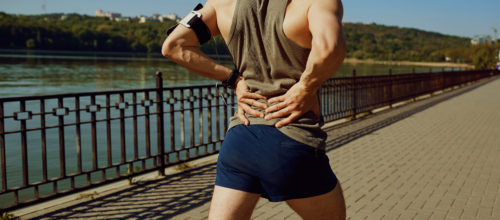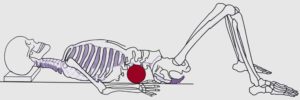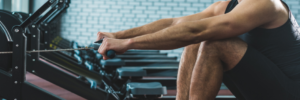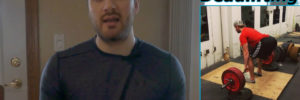
30 DAYS OF LOW BACK PAIN: DAYS 21-30
The third and final installment of my “30 Days of Low Back Pain” series. All three parts cover everything from low back assessment, tips on spine friendly training strategies, to how to improve low back health and performance.
Day 21 – Things to Know About the Deadlift & Low Back Pain
Did you know that different deadlift styles have different implications on the low back?
Shear stress tends to be a big concern as the spine fails much quicker under shear versus compressive force.
The trap bar deadlift produces the least amount of shear followed by the sumo, and then conventional deadlift. If you’re looking to program the deadlift to a client with shear intolerance back pain, the trap bar deadlift may be the safest option 🙂
https://www.instagram.com/p/B3SYGnVHShR/
Day 22 – Spinal Positioning & Hamstring Stretching
Do you round your back while stretching your hamstrings?
Probably not the best idea for sparing the spine.
Rounding the low back to get deeper into a stretch may only aggravate an existing problem.
You’re better off keeping a neutral spine and bending at the hips to get deeper into a hamstring stretch.
https://www.instagram.com/p/B3Vk7pDB3xX/
Day 23 – How Sitting All-day Affects Performance in the Weight Room
If you sit all day and then go do the wrong things in the weight room, you’re asking for trouble!
Sitting for prolonged periods will rob performance and increase the chances that a back injury may develop.
As I’ve learned over the years, if you find yourself sitting all-day and perhaps have an intense workout scheduled, it may be best to reschedule that workout or at the least, tone the intensity and volume down.
https://www.instagram.com/p/B3YTvxQHSba/
Day 24 – Core Strength Vs. Core Endurance. What’s the Difference?
Core strength and core endurance are two terms that often get misused.
Core strength refers to the maximal amount of force that one may exert in a single repetition or over a short period (e.g., Deadlift), whereas core endurance refers to the ability to maintain a task over an extended period of time (e.g., holding a plank).
Research supports core endurance for helping people alleviate low back symptoms.
Not core strength.
https://www.instagram.com/p/B3aykSPH0xl/
Day 25 – Stiffness & Low Back Pain
To popular belief, people think stiffness is universally “bad”.
However.
This is not true. Stiffness provides stability. And people with low back pain tend to have mechanical instability. By teaching people to brace their core, and through building core endurance with spine stabilization exercises, we can enhance spinal stiffness.
Spinal stiffness can take away people’s back pain.
https://www.instagram.com/p/B3dPG2DHFCq/
Day 26 – Walking & Low Back Pain
Walk with a slow pace that involves the head poking forward, lack of arm swing and poor stride length can cause low back pain.
Simply getting people to walk properly can reduce loading on the spine and relieve symptoms.
A simple task that often gets overlooked 🙂
https://www.instagram.com/p/B3fKqm6HRpz/
Day 27 – Squat Tip – Addressing a Hip Shift
Hip shifts during a squat are a common problem that I see in the weight room.
A lack of hip mobility (internal rotation), motor control issues or an injury history (low back or hip) can be the culprit for a hip shift to occur.
Simply making one aware of their hip shift, addressing mobility restrictions or changing foot positions typically clean this problem up.
https://www.instagram.com/p/B3h9O0anbUh/
Day 28 – Disc Herniations Developing in the Weight Room
Taking the spine through repeated bouts of flexion and extension is the injury mechanism for creating a disc injury. The spine can only tolerate so many bending cycles before it breaks. A good analogy can be seen with a credit card. If you continuously bend the credit card back and forth, it will snap.
And you might ask, what type of exercises take the spine through repeated flexion and extension? Well. The sit-up would be the most notable.
Perform the wrong exercises in the gym and you will create a disc herniation.
https://www.instagram.com/p/B3kf9jrHLu0/?utm_source=ig_web_copy_link
Day 29 – Why Spine Stabilization Exercises are Important for People with Back Pain
Degenerative changes to the spine create instability and alter biomechanical forces. Spine stabilization exercises (e.g., birddog, deadbug) can help create stabilization to weak points in the spine. This may help alleviate stress on spine structures that are compensating for the alteration in biomechanical forces.
https://www.instagram.com/p/B3peWukHLQX/
Day 30 – Invest in the Best
During my time first 6-7 months going through my back problems, I had worked with about a dozen clinicians who provided minimal help or guidance. I’d even argue I got worse from some, and even one physiotherapist suggested I should consider surgery.
The cost of all of these visits accumulated to about $5000.00.
And do you want to hear something crazy?
I learned more than all of these clinicians combined from one book “Back Mechanic”, by Dr. Stuart McGill.
The cost of “Back Mechanic” is $40.00.
Now. I’m not saying “Back Mechanic” is going to be your ultimate solution. You should still see a clinician who specializes in back pain. But the point being is that if a back expert such as Dr. McGill charged $1000.00 for an assessment (Note: I don’t know his exact fees – just using this as an example). I can guarantee that the $1000.00 assessment would be a hell of a good one, and it would have ultimately saved $4000.00 in the end if you compared it to the $5000.00 I spent.
The final point I would like to make is that invest your money in the best and most qualified people. Simply investing in someone that doesn’t have much knowledge on back issues may only cause you to spend more in the long-run.
https://www.instagram.com/p/B3s4QN0nt24/
References
1. Scannell, J. P., & McGill, S. M. (2009). Disc prolapse: Evidence of reversal with repeated extension. Spine, 34(4), 344-350.
2. Yates, J. P., Giangregorio, L., & McGill, S. M. (2010). The influence of intervertebral disc shape on the pathway of posterior/posterolateral partial herniation. Spine, 35(7), 734-739.
Thumbnail Image Licensed from “Roman Lacheev/canva.com”











